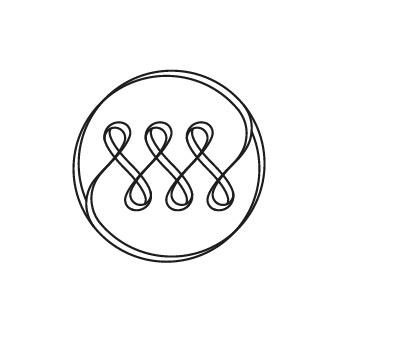The conception of worlds inside worlds or "worlding" (Willis, 2006) deals with the epistemological and ontological side of design. It relates to the creation of connections, holistic correlations, and, ultimately, collaborations between social actors and various ecosystems. It is fundamental to the characteristic of “dasein” or "being" (Heidegger, 1962). Today every work is collaborative; it begins with the autopoietic concept of Maturana (1992) and the self-organization of all living systems; eventually, triggering the epistemic relationality between multiple agents who potentialize the fact that everyone is designing and, therefore, everyone is a designer (Manzini, 2015).
‘World’ does not refer solely to ‘Planet Earth’. It's related to Ontic, the physical, confined, located, and diversity of worlds. The relationships and bonds established from worlding influence culture and nature. Design, after all, is about creating cultural meanings and practices for various ends. This highlights the power of design and the influence in its ontological approach. It embraces its possibilities of influencing the micro and macro worlds inside worlds, or, the ‘pluriverse’ (Escobar, 2018).
Increasingly, designers have a tremendous responsibility and influence to take care of the spaces we design and that continuously design us back (Willis, 2006). As previously mentioned, objects influence the way people learn and interact. Space design or world-making is at a higher level where systems and new methods of co-living have to adjust to the constant need to improve affordances (Gibson, 1979).
Affordances will play a significant role in the world's future scenario. What the environment offers to individuals is taken to a systemic level with relationality, making it incredibly relevant for worlding. "The political activation of relationality" (Escobar, 2018, p. 165) pushes the synergies created between all living systems at large scales. Since every system is connected, and every decision made generates impact, design nourishes new transitions and processes.
Victor Papanek was one of the first influencers in transition design. His broad vision and design philosophy declared, "industrial design has put murder on a mass-production basis”, dramatically concluding, "designers have become a dangerous breed" (1985, ix). The preceding statement has a sense of direct resentment against industrial design's defuturing practices (Fry, 2015), which focused on exercises, production processes, and objects that reduced the possibility of a sustained future. Many bypassed Papanek's theory for several decades due to the onset of global consumerist culture. There's no more time to waste, the world today is demanding integral and reconstructive proposals.
Transition Design aims to be a critical thinking practice for a new order, degrowth, commoning, and conviviality through systemic adaptation (Carnegie Mellon University's School of Design, 2019). Therefore, design, as it is still employed in some disciplines, requires the reorientation of old functionalist approaches. Instead, designers must acknowledge the need for the integration and expansion in multiple epistemic fields toward relational modes of learning, being in the world and acting in it. Eventually achieving a sustained future for all ecosystems. The responsibility that designers carry and how they can react to complexity, conviviality, and relationality is further discussed in the ‘sufferer’ concept of this Design Taxonomy.
"Worlds inside Worlds"
References:
· Carnegie Mellon University. (2019). About Transition Design. Retrieved from https://transitiondesignseminarcmu.net/.
· Escobar, A. (2018). Designs for the pluriverse : radical interdependence, autonomy, and the making of worlds. Durham: Duke University Press.
· Fry, T. (2015). The Voice of Sustainment: Design Ethics as Futuring. Design Philosophy Papers, 2(2), 145-156. doi:10.2752/144871304x13966215068038
· Gibson, J. J. (2014). The theory of affordances (1979).
· Heidegger, M., Macquarrie, J., & Robinson, E. (1962). Being and time. Malden, MA: Blackwell.
· Manzini, E., & Coad, R. (2015). Design, When Everybody Designs: An Introduction to Design for Social Innovation.
· Maturana, H. R. (1992). The tree of knowledge : the biological roots of human understanding. Boston, Mass.: Shambhala.
· Papanek, V. J. (1985). Design for the real world: human ecology and social change. Chicago: Academy Chicago.
· Willis, A.-M. (2006). Ontological designing. Design Philosophy Papers, 4(2), 69-92. doi:10.2752/144871306x13966268131514
· Carnegie Mellon University. (2019). About Transition Design. Retrieved from https://transitiondesignseminarcmu.net/.
· Escobar, A. (2018). Designs for the pluriverse : radical interdependence, autonomy, and the making of worlds. Durham: Duke University Press.
· Fry, T. (2015). The Voice of Sustainment: Design Ethics as Futuring. Design Philosophy Papers, 2(2), 145-156. doi:10.2752/144871304x13966215068038
· Gibson, J. J. (2014). The theory of affordances (1979).
· Heidegger, M., Macquarrie, J., & Robinson, E. (1962). Being and time. Malden, MA: Blackwell.
· Manzini, E., & Coad, R. (2015). Design, When Everybody Designs: An Introduction to Design for Social Innovation.
· Maturana, H. R. (1992). The tree of knowledge : the biological roots of human understanding. Boston, Mass.: Shambhala.
· Papanek, V. J. (1985). Design for the real world: human ecology and social change. Chicago: Academy Chicago.
· Willis, A.-M. (2006). Ontological designing. Design Philosophy Papers, 4(2), 69-92. doi:10.2752/144871306x13966268131514
